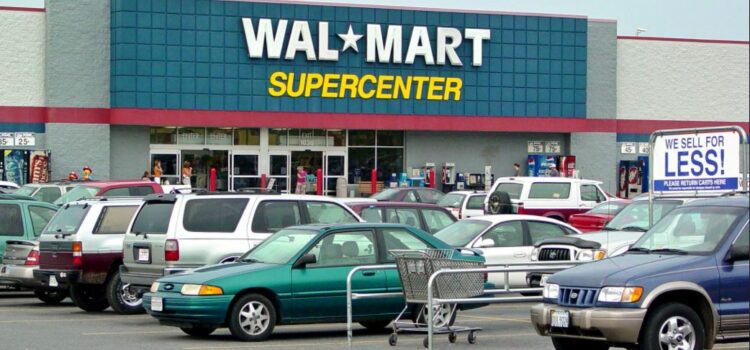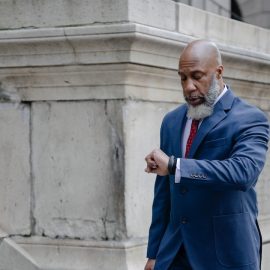

This article is an excerpt from the Shortform book guide to "Sam Walton: Made in America" by Sam Walton. Shortform has the world's best summaries and analyses of books you should be reading.
Like this article? Sign up for a free trial here .
Why does Wal-Mart have such a focus on putting the customer first? Where did this idea originate from?
Wal-Mart’s founder Sam Walton believed in putting the customer first, no matter what. Walton believed that if you exceed the customer’s expectations, then they will always come back for more.
Keep reading about Sam Walton’s “put the customer first” strategy and how it helped Wal-Mart dominate.
The #1 Principle of Wal-Mart: Customer Focus
Sam Walton believed that his company should always put the customer first. Wal-Mart’s mission was to lower the cost of living for millions of people around the world.
In retail, “the customer wants everything”: wide variety, high-quality goods, the lowest possible prices, satisfaction guarantees, friendly and competent service, and a pleasant shopping experience.
Any retailer that doesn’t provide this is failing its customers. Any business that does this better is improving the customers’ lives.
- Sam Walton had no sympathy for middlemen who feel entitled to a share but provide little value to customers. He also didn’t have sympathy for retailers that did a poor job with customers before Wal-Mart entered. “Nobody owes anybody else a living.”
Wal-Mart Serves the Locals
Similarly, Sam didn’t sympathize with the idea that Wal-Mart hates small towns.
- Residents generally like when Wal-Mart enters a town, and Wal-Mart chooses locations where they will get a positive reception.
- If the local stores go out of business, the customers have killed them by voting with their dollars, not Wal-Mart. Local stores that enjoyed huge markups, limited selection, and limited hours were doomed to fail sooner or later.
- Sam suspected the ire around town shops disappearing comes from people who just want the town to be stuck in time (even if they’ve personally moved away to the suburbs). But this is the same sentiment from city-dwellers who bemoan that people are moving away to the suburbs.
- If local businesses want to survive, they need to find a niche and a reason for customers to shop there—be it more knowledgeable service staff, a broader selection in a narrower industry (such as hardware or crafts), or a personal touch.
Argue for the Customer
Sam Walton trained his buyers to argue for the customer, not for the company. This made them fearless. “Your customer deserves the best price you can get. Don’t ever feel sorry for a vendor. He knows what he can sell for, and we want his bottom price.”
- His buyers cautioned vendors to offer their best possible price, because if they went to the vendor’s competitor and they offered a better price, the competitor would get the business.
The principle extends downward to the lowest, most granular level. Wal-Mart needs to constantly battle “big company” disease.
- Walton mused constantly about the customer experience. When customers walk around aisles, how will they see and buy items? How do they feel on entering and leaving a store? How do they feel about getting help?
- Each Wal-Mart needs to cater to its particular customers. A Wal-Mart servicing tourists needs to have different merchandise from a general population Wal-Mart 5 miles away.
- Regional managers and buyers aren’t above the ground-floor work in operating stores. They’re required to visit stores to see firsthand how they’re doing, and even try to manage the store for a few days. It must be ingrained that their real job is to support the merchants in the stores.
- In turn, department and store managers need to visit headquarters to communicate what they see in their stores.
- Walton said, “a computer can tell you down to the dime what you’ve sold. But it can never tell you how much you could have sold.”
Exceed the customer’s expectations—they’ll come back over and over. Give them what they want—and a little more.
(Shortform note: The emphasis on the customer being the mission, as well as Sam’s indifference about his own wealth, enabled his company to be efficient, low margin, and long-term. Any greedier retailer that wanted to preserve margins at the expense of price died. This is very much in line with Jeff Bezos’s thinking on Amazon.)

———End of Preview———
Like what you just read? Read the rest of the world's best book summary and analysis of Sam Walton's "Sam Walton: Made in America" at Shortform .
Here's what you'll find in our full Sam Walton: Made in America summary :
- The story of Sam Walton and how he started Wal-Mart
- How Wal-Mart grew from a single five and dime store to one of the world's largest companies
- Sam Walton's retail strategies and management advice






